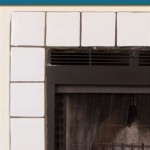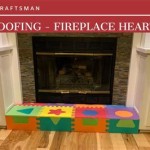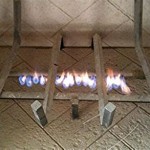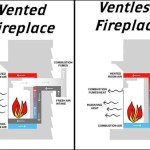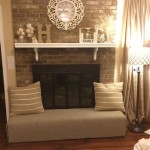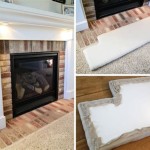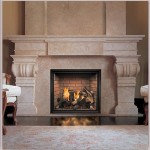Remote Control for Fireplace: Enhancing Comfort and Safety
The integration of remote control technology into fireplaces has transformed the user experience, providing enhanced convenience, safety, and control. Modern fireplaces, whether gas, electric, or even some traditional wood-burning models adapted with specific components, now commonly offer remote operation. This article explores the various facets of remote control systems for fireplaces, delving into their functionality, benefits, different types, pertinent safety considerations, and aspects to consider when selecting and implementing such a system.
Functionality and Benefits of Fireplace Remote Controls
Fireplace remote controls primarily serve to regulate the flame intensity and on/off function of the fireplace from a distance. The underlying technology often employs radio frequency (RF), infrared (IR), or Wi-Fi communication protocols. RF remotes offer a greater operational range and are less susceptible to interference from obstructions compared to IR remotes, which require a direct line of sight. Wi-Fi enabled systems allow for control via smartphone applications, offering even greater flexibility and integration with smart home ecosystems.
The advantages of fireplace remote controls are manifold. First and foremost, they enhance convenience. Users can ignite or extinguish the flames, adjust the flame height, and even manage supplemental features like blowers or accent lighting without needing to be physically near the fireplace. This is particularly beneficial for individuals with mobility limitations or when seeking to adjust the ambiance from a comfortable seating position.
Furthermore, remote controls contribute to energy efficiency. Many units incorporate programmable timers and thermostats, allowing users to schedule the fireplace's operation and maintain a desired room temperature automatically. This prevents wasteful energy consumption by ensuring the fireplace only operates when needed, contributing to lower heating bills and a reduced environmental footprint.
Remote control systems also provide an added layer of safety. By enabling remote activation and deactivation, the risk associated with manual lighting and extinguishing of the fireplace, especially gas fireplaces, is minimized. Some advanced systems include safety features such as automatic shut-off mechanisms that activate if the fireplace is left unattended for an extended period, significantly reducing the potential for accidents or carbon monoxide buildup.
Types of Fireplace Remote Control Systems
The marketplace offers a variety of fireplace remote control systems, each tailored to specific needs and fireplace types. Understanding these distinctions is crucial for selecting the most appropriate system for a given application.
On/Off Remotes: These are the most basic type, providing simple on/off control of the fireplace. They are typically compatible with millivolt gas valve systems and are ideal for users who primarily desire basic remote activation and deactivation capabilities.
Thermostatic Remotes: Thermostatic remotes incorporate a temperature sensor, allowing the user to set a desired room temperature. The fireplace will automatically cycle on and off to maintain the specified temperature, providing greater comfort and energy efficiency. These systems often require a more sophisticated valve system and may necessitate professional installation.
Modulating Remotes: These remotes offer the highest level of control, allowing users to adjust the flame height and blower speed in addition to the on/off function and thermostatic control. Modulating remotes provide a broader range of customization for creating the desired ambiance and optimizing energy consumption. They are typically compatible with more advanced gas valve systems and may require professional installation and programming.
Smart Home Integration: Some remote control systems are designed to integrate with smart home platforms like Amazon Alexa, Google Assistant, or Apple HomeKit. These systems allow users to control their fireplace with voice commands or through a centralized smart home app, enabling seamless integration with other connected devices in the home.
Millivolt Systems: It's important to also consider the type of valve system already present in the fireplace. Millivolt systems use a pilot light to generate a small electrical current (millivolts) to operate the gas valve. Remote controls for millivolt systems are typically simpler and less expensive to install. They often function by simply closing or opening a circuit to activate the gas valve.
Electronic Ignition Systems: Electronic ignition systems use an electronic spark to ignite the gas, eliminating the need for a pilot light. These systems often require a more complex remote control that can communicate with the electronic ignition module. These modules can require a constant supply of power, unlike millivolt systems which generate their own power. Electronic ignition systems are often found in newer, more efficient fireplaces.
Electric Fireplace Remotes: Electric fireplace remotes are simpler in operation due to the absence of a gas valve. They typically control the heating element, flame effect intensity, and any additional features like timers or backlighting.
Safety Considerations and Best Practices
While fireplace remote controls offer numerous benefits, it's essential to prioritize safety when selecting, installing, and using these systems. Improper installation or misuse can lead to potential hazards, including gas leaks, carbon monoxide poisoning, or electrical fires.
Professional Installation: For gas fireplaces, professional installation by a qualified technician is strongly recommended, particularly for thermostatic and modulating remote control systems. A certified technician can ensure proper gas line connections, valve system compatibility, and safe venting practices, mitigating the risk of gas leaks and carbon monoxide buildup.
Carbon Monoxide Detectors: The installation of carbon monoxide detectors is paramount in any home with a gas fireplace, regardless of whether it is equipped with a remote control. These detectors provide an early warning of the presence of carbon monoxide, a colorless and odorless gas that can be fatal. Regular testing and maintenance of carbon monoxide detectors are crucial.
Battery Management: Ensure that batteries in both the remote control and the receiver unit are fresh and properly installed. Weak batteries can lead to erratic operation or failure of the remote control system, potentially causing the fireplace to malfunction. Consider using lithium batteries for extended lifespan and optimal performance.
Child Safety: Keep remote controls out of the reach of children. The fireplace should not be operated by unsupervised children. Educate children about the dangers of fire and the proper use of the fireplace. Some remote control systems feature child lock features to prevent accidental activation.
Regular Maintenance: Schedule regular maintenance of the fireplace and its remote control system. This includes cleaning the fireplace, inspecting gas lines for leaks, and verifying the proper operation of the remote control system. A qualified technician should perform annual inspections of gas fireplaces to ensure safety and efficiency.
Venting: It is critical that gas fireplaces are properly vented to the outside. This ensures that the byproducts of combustion, including carbon monoxide, are safely expelled from the home. Blocked or improperly installed vents can lead to dangerous carbon monoxide buildup. Regular inspection of the venting system is essential.
Overheating: Avoid placing flammable materials near the fireplace. Keep furniture, drapes, and other combustible items a safe distance from the fireplace to prevent overheating and potential fires. Be aware of the surface temperatures of the fireplace itself, especially around the glass enclosure or metal surfaces. Supervise the operation of the fireplace and do not leave it unattended for extended periods.
Understanding the Manual: Always read and understand the manufacturer’s manual for both the fireplace and the remote control. Each system can have unique operational procedures and safety requirements. Ignoring the manual can lead to unintended operation and safety hazards.
Emergency Procedures: Have a clear understanding of emergency procedures in case of a fire or gas leak. Know the location of the gas shut-off valve and how to operate it. Keep emergency contact information readily available. In the event of a gas leak, evacuate the premises immediately and contact the gas company.
By adhering to these safety considerations and best practices, users can enjoy the convenience and comfort of a fireplace remote control system while minimizing the potential for accidents and ensuring the safety of their homes and families.

Gas Fireplace Remotes More Fireplaceremotecontrols Com

Valor Gv60 Max Remote Receiver 4002251 4002422 G6r H3tv4 R3au Friendly Fires

Rfc Model Fireplace Remote Control Grand Mate Noted Accessories Supplier

Fireplace Remote Control How To S Fireplaceremotecontrols Blog

Gas Fireplace Remote Control Guide Fireplaces Direct Learning Center

Skytech 1001 A Fscrf On Off Fireplace Electronic Fan Sd Remote Control

Gas Fireplace Remote Control Guide Fireplaces Direct Learning Center

Paramount Slim Line Remote For Electric Fireplace Inserts Part Blt Rc1

Sit Gas Fireplace Or Stove Remote Control Wall Bracket Hechler S Mainstreet Hearth Home Troy Missouri

Livingandhome Black Electric Remote Control Adjustable Flame Fireplace 100 Inch Diy At B Q
Related Posts

